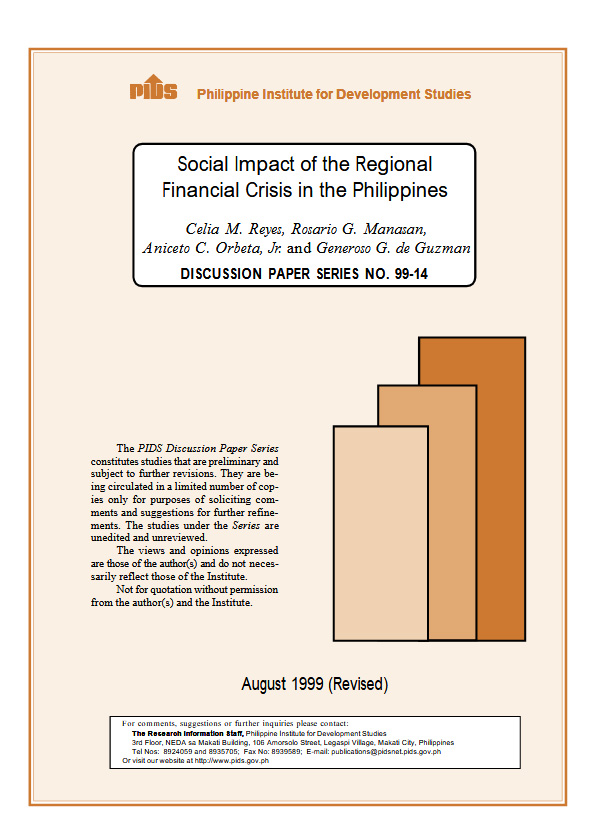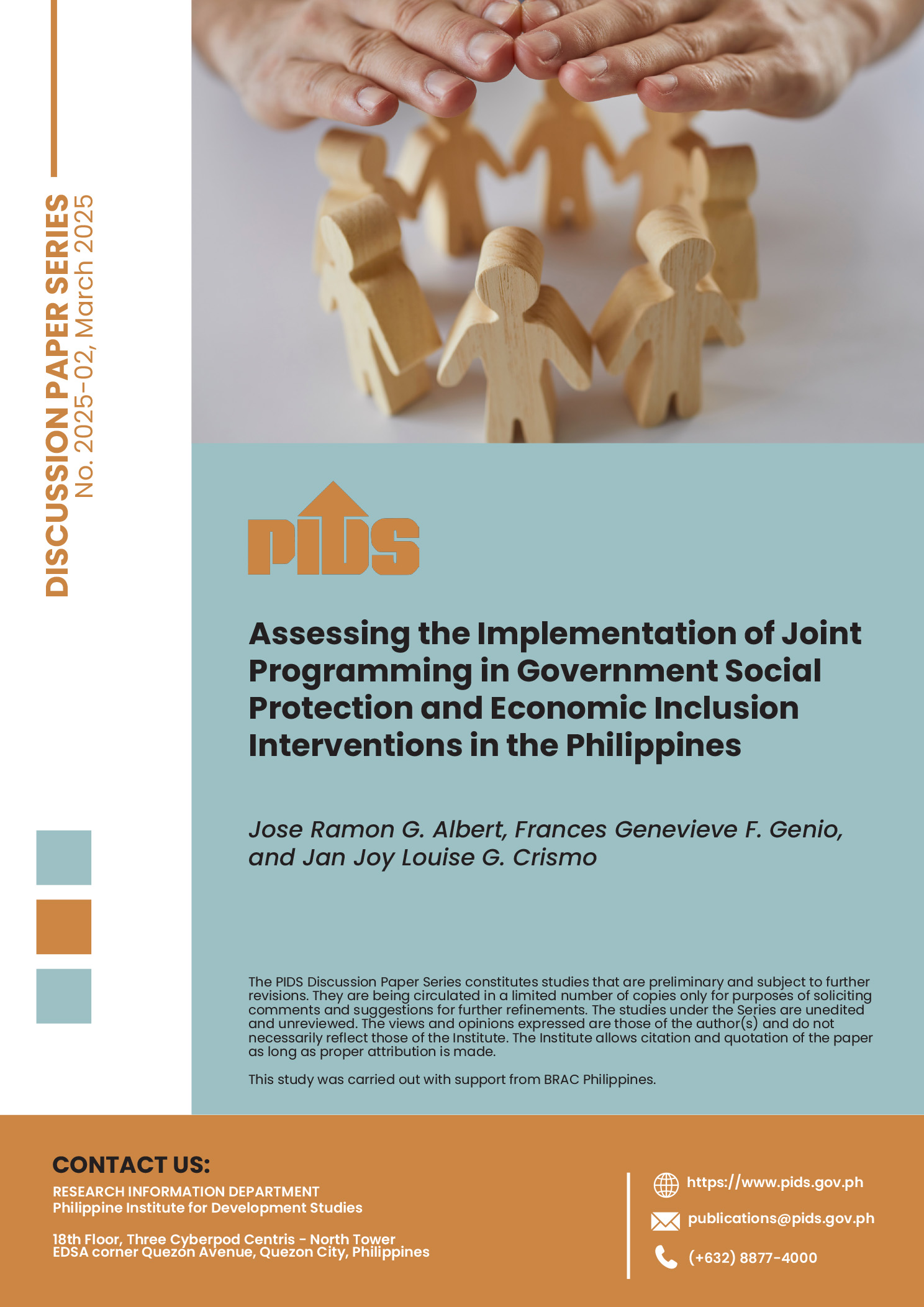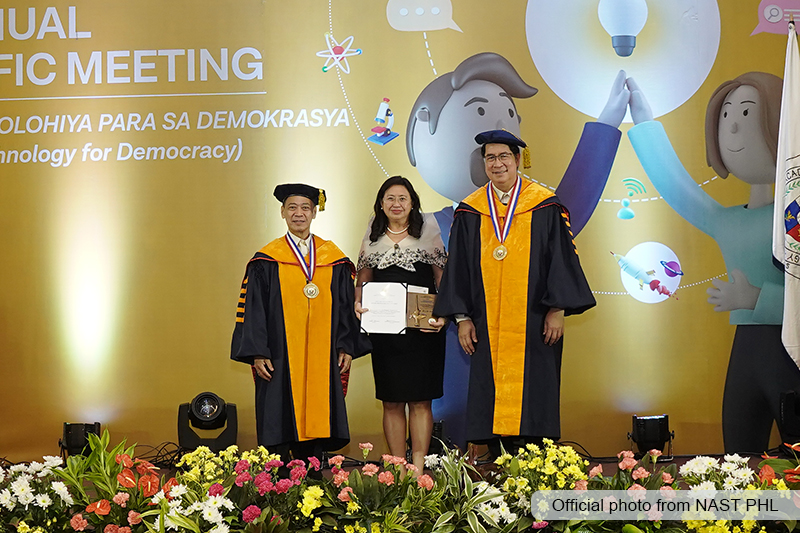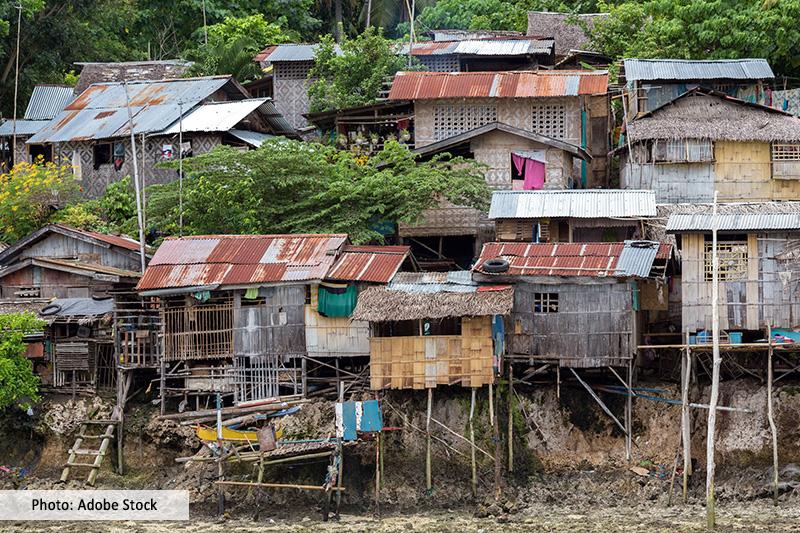The Philippines, having been integrated into the global economy, has not been spared from the financial crisis that hit Asia in July 1997. Pre-financial crisis has indicated marked improvement in the general health condition of the population, higher incomes and employment, stable prices and favorable balance of payments and fiscal position. This study comprehensively examines the effects of the crisis in the Philippine economy in terms of its fiscal/social impacts. To deal with the adverse effects of the crisis, several coping mechanisms are cited, such as the continuation of Comprehensive and Integrated Delivery of Social Service, the institution of Technical Education and Skill Development Authority, and cost cutting measures such as job rotation/forced vacation and freezing salary increases from the government’s initiative and self-employment mechanisms such as direct selling and setting up of sari-sari store from the individual’s initiative.
Citations
This publication has been cited 14 times
- Beja, Edsel Jr.. 2009. The Philippines on debt row. MPRA Paper 16553, . University Library of Munich, Germany.
- Datt, Gaurav and Hans Hoogeveen. 2003. El Nino or El Peso? Crisis, poverty and income distribution in the Philippines. World Development, 31, no. 7, 1103-1124. Elsevier.
- Datt, Gaurav and Hans Hoogeveen. 2000. El Nino or El Peso? Crisis, poverty, and income distribution in the Philippines. Policy Research Working Paper Series 2466. The World Bank.
- Green, David Jay and J. Edgardo Campos. 2001. Fiscal lessons from the East Asian financial crisis. Journal of Asian Economics, 12, no. 3, 309-329. Elsevier.
- Majumdar, Sumon, Anandi Mani, and Sharun W. Mukand. 2004. Politics, information and the urban bias. Journal of Development Economics, 75, no. 1, 137-165. Elsevier.
- Majumdar, Sumon, Anandi Mani, and Sharun W. Mukand. 2004. Politics, information and the urban bias. Discussion Papers Series, Tufts University 0409. Department of Economics, Tufts University.
- Mapa, Dennis S., Monica Flerida B. Sandoval, and David Joseph Emmanuel B. Yap, . ". 2009. Investigating the presence of regional economic growth convergence in the Philippines using Kalman filter. MPRA Paper 20681. University Library of Munich, Germany.
- Mapa, Dennis S., Monica Flerida B. Sandoval, and David Joseph Emmanuel B. Yap, . ". 2013. Investigating the presence of regional economic growth convergence in the Philippines using Kalman filter. Philippine Journal of Development PJD, 37, no. 2a. Philippine Institute for Development Studies.
- Milo, Melanie S.. 1999. Contagion effects of the Asian crisis, policy responses and their implications. Philippine Journal of Development JPD, 26, no. 2-c. Philippine Institute for Development Studies..
- Mukhopadhaya, Pundarik. 2002. Crisis, social sector and income distribution in some southeast Asian countries. EIJS Working Paper Series 161. Stockholm School of Economics, The European Institute of Japanese Studies.
- Pineda, Virginia S.. 1999. Impact of the financial crisis on social services financing and delivery. Discussion Papers DP 1999-30. Philippine Institute for Development Studies.
- World Bank. 2002. A preliminary desk review of urban poverty in the East Asia region: With particular focus on Indonesia, the Philippines, and Vietnam. World Bank Publications - Reports 15110. The World Bank Group.
- World Bank. 2012. Addressing vulnerability in East Asia: A regional study. World Bank Publications - Reports 11900. The World Bank Group.
- World Bank. 2011. Philippines. World Bank Publications - Reports 27384. The World Bank Group.













